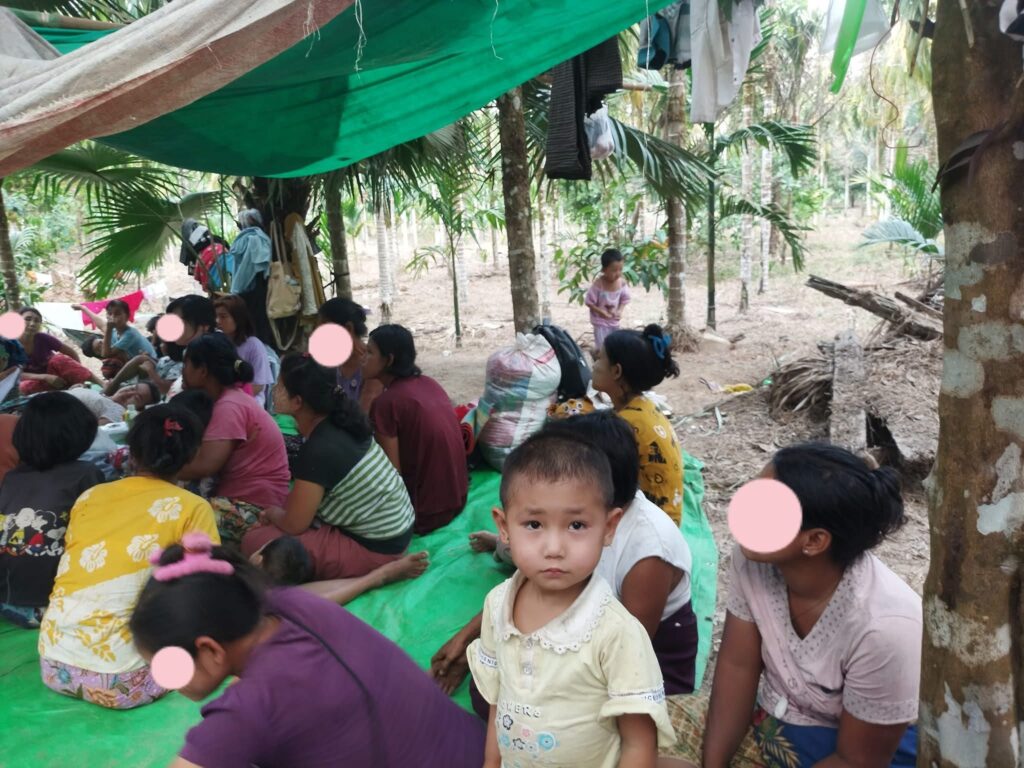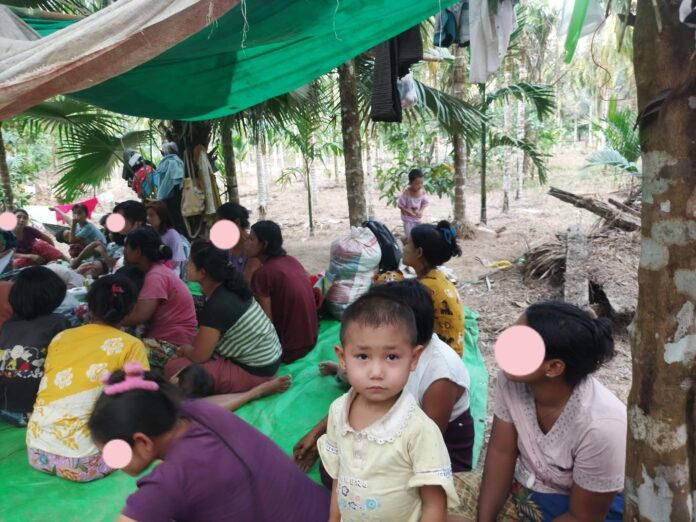According to data from FE 5 Tanintharyi, ongoing clashes and airstrikes in Tanintharyi Region have displaced more than 77,200 people since January 2025.

Clashes have escalated due to the junta’s efforts to secure control of major trade routes, clear deep-sea port areas, and to allow for the advance of military operations. Additionally, arson attacks on civilian homes, along with arrests and extrajudicial killings, have contributed to the rising displacement numbers.
According to Ko Min Lwin Oo, a spokesperson for the Dawei District Strike Committee, in January of this year, the number of internally displaced persons (IDPs) increased by over 10,000. This is due to continued military offensives and artillery shelling in areas where military council bases have been seized.
“In early 2025, the military launched continuous airstrikes at the beginning of the dry season, followed by naval attacks along the coastline. They also carried out artillery shelling. When their military bases were seized, they conducted military offensives in those areas, leading to the displacement of civilians, which increased the number of internally displaced persons,” Ko Min Lwin Oo added.
Currently, the highest number of internally displaced persons (IDPs) is in the townships of Palaw, Tanintharyi, Myeik, and Kyunsu due to ongoing clashes, and airstrikes. The number of displaced persons has reached up to 39,000.
According to Nai Aye Mon, Program Director of the Mon Human Rights Foundation, in addition to displacing large numbers of civilians, the forced recruitment of young people into military service is increasing every month,
“Currently, according to HURFOM data, there are over 30,000 conscripted individuals. At present, the situation is that almost every village, near the border towns, is facing a loss of their youth to either military service, or from youth fleeing conscription. The youth in these areas are fleeing to regions near the Thai border. However, the Thai border is tightly controlled, making it much harder to cross than ever before. Youth escaping from forced recruitment, and military conflict, remains significantly high.”
In the Tanintharyi Region, the numbers increased from 65,000 in December to 77,200 in January 2025.
According to FE 5 Tanintharyi, in January, the military council carried out no fewer than 27 airstrikes and conducted bombings using drones. Persons on the ground providing assistance to displaced persons, report that many people are increasingly suffering from malnutrition and disease.

